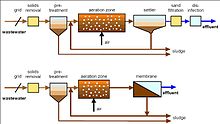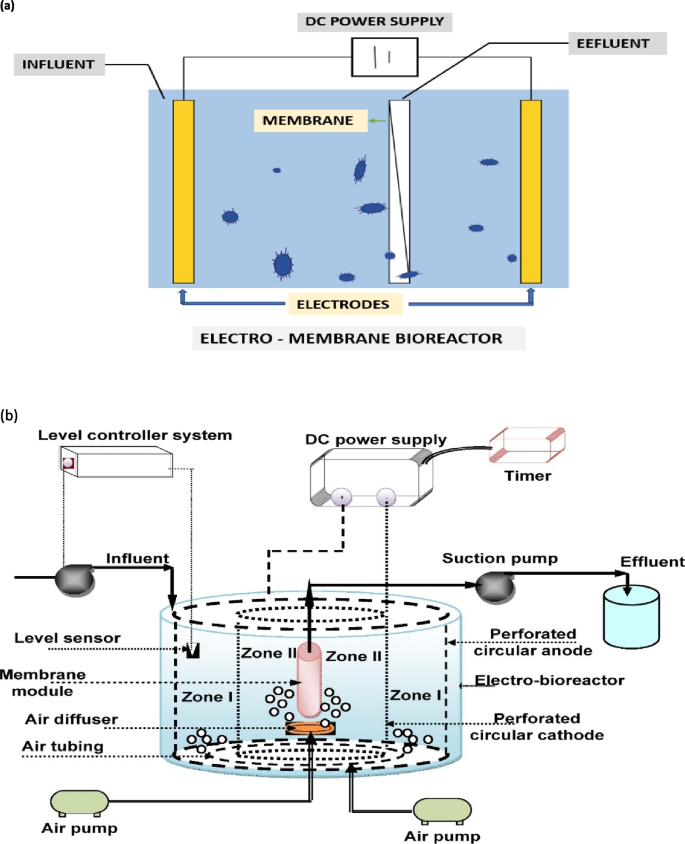How Membrane Bioreactor Technology Is Revolutionizing Wastewater Treatment
Wiki Article
Membrane Layer Bioreactors Explained: Efficient Solutions for Clean Water
Membrane bioreactors (MBRs) have become an innovative remedy for dealing with the pushing challenges of wastewater treatment. By integrating organic processes with sophisticated membrane purification, MBRs not only improve the top quality of cured water but additionally lower the spatial requirements of treatment centers. As ecological concerns heighten, the duty of MBR innovation in promoting lasting water management ends up being increasingly considerable. The intricacies of their operation, benefits, and possible applications merit a closer exam to completely understand their effect on the future of water therapy.
What Are Membrane Layer Bioreactors?
Membrane bioreactors (MBRs) are sophisticated wastewater treatment systems that integrate biological deterioration procedures with membrane layer purification technology. This assimilation enables the reliable elimination of pollutants from water, making MBRs a preferred choice in various applications, consisting of municipal wastewater treatment and commercial effluent monitoring.
Among the critical benefits of MBRs is their ability to create top notch effluent, typically suitable for reuse in irrigation or industrial processes. Furthermore, MBRs require a smaller footprint compared to standard therapy systems, making them ideal for urban setups where space may be limited.
Additionally, MBRs can effectively deal with varying influent tons and are less vulnerable to the results of poisonous shocks. These features add to their growing popularity as a lasting option for attending to the increasing need for tidy water while decreasing environmental effects.
Just How Membrane Bioreactors Work
While the operation of membrane layer bioreactors (MBRs) might seem complicated, it basically revolves around the synergy in between organic procedures and membrane layer filtering. MBRs integrate a biological treatment process, typically turned on sludge, with a membrane separation system to treat wastewater successfully.In an MBR system, wastewater is first introduced into a bioreactor where microorganisms break down natural issue and other contaminants. The organic activity decreases the concentration of pollutants while promoting the development of biomass. Following this organic therapy, the blended alcohol undergoes membrane layer purification, which can be microfiltration or ultrafiltration, relying on the wanted effluent quality.
The membranes serve as a physical barrier, allowing water and little solutes to pass while keeping suspended solids and larger particles. This allows the system to keep a high focus of biomass within the activator, boosting the therapy effectiveness.
Furthermore, the constant splitting up of cured water from the biomass helps with a compact layout and decreases the footprint of the treatment center. In general, the combination of organic deterioration and membrane layer filtering in MBRs leads to efficient and reputable wastewater therapy, making certain high-grade effluent appropriate for different applications.
Advantages of MBR Technology
Among the essential advantages of membrane bioreactor (MBR) modern technology is its capability to produce high-grade effluent with a considerably reduced impact compared to standard wastewater therapy techniques. MBR systems effectively integrate biological treatment and membrane layer filtration, causing exceptional removal of impurities, including put on hold solids, pathogens, and raw material. This capacity results in effluent that often fulfills or surpasses strict governing requirements for reuse and discharge.In addition, MBR modern technology enables greater biomass concentrations, which improves the therapy performance and decreases the required activator quantity. This portable design is especially helpful in city areas where area is limited. The functional flexibility of MBR systems additionally suggests they can adjust to differing influent high qualities and circulation rates, making them appropriate for a wide variety of applications.
Moreover, the decreased sludge production linked with MBR processes contributes to decrease operational and upkeep costs. The membranes function as a physical Get the facts barrier, minimizing the threat of clogging and making it possible for longer functional durations in between cleaning. In general, the benefits of MBR innovation make it an appealing option for sustainable wastewater therapy, attending to both ecological worries and the requirement for efficient resource monitoring.
Applications of Membrane Bioreactors
With their convenience and efficiency, membrane bioreactors (MBRs) discover applications throughout different sectors, including municipal wastewater therapy, commercial processes, and even water improvement. In community setups, MBRs supply a small service for treating wastewater, successfully eliminating contaminants while at the same time generating premium effluent that meets stringent governing criteria. This makes them especially appropriate for areas with limited room.In industrial applications, MBR technology is made use of for dealing with process water, particularly in sectors such as food and drink, drugs, and petrochemicals. These industries gain from MBRs' capability to deal with high organic lots and their efficiency in recuperating valuable resources from wastewater, such as nutrients and water.
Furthermore, MBRs play a vital duty in water improvement initiatives, making it possible for the reuse of dealt with wastewater for watering, industrial procedures, or even as potable water after additional therapy (Membrane Bioreactor). Their effectiveness in removing microorganisms and toxins makes them a trusted option for making sure water high quality in numerous reuse applications
Future of Water Treatment Solutions
The future of water therapy options is positioned for transformative advancements driven by technical development and raising ecological understanding. As worldwide water deficiency becomes a pressing issue, brand-new techniques, including membrane bioreactor (MBR) systems, are established to play a pivotal function in improving the effectiveness and sustainability of water therapy processes.Emerging technologies such as expert system and maker learning are expected to enhance therapy procedures, enabling real-time monitoring and predictive maintenance. This will certainly enhance the general integrity and effectiveness of water therapy facilities. Improvements in membrane layer products, such as graphene and nanofiltration, assure to increase permeation prices and reduce fouling, leading to lower energy consumption and operational costs.
Furthermore, the combination of renewable resource resources right into water therapy plants will add to greener practices. The round economy version will certainly likewise acquire traction, encouraging the healing of valuable sources from wastewater, such as nutrients and power.
Verdict

Membrane bioreactors (MBRs) have actually emerged as an advanced service for addressing the pushing challenges of wastewater therapy. By incorporating biological processes with innovative membrane layer you can try these out filtration, MBRs not only boost the quality of treated water but also reduce the spatial requirements of therapy centers.One of the key benefits of membrane bioreactor (MBR) innovation is its capacity to produce premium effluent with a substantially lowered footprint contrasted to conventional wastewater therapy methods.With their adaptability and performance, membrane bioreactors (MBRs) discover applications across different fields, consisting of see here community wastewater treatment, industrial procedures, and even water recovery.In final thought, membrane bioreactors stand for a significant improvement in wastewater treatment technology, integrating organic procedures with efficient membrane layer purification to generate premium effluent.
Report this wiki page